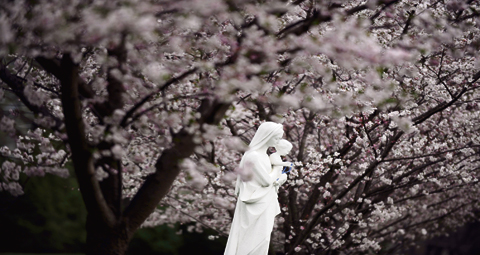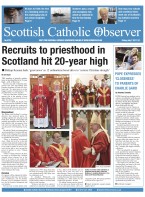April 13 | ![]() 0 COMMENTS
0 COMMENTS ![]() print
print

Do not be blind to the Resurrection, see Easter and spring
— Fr Ronald Rolheiser
In my mid-20s, I spent a year as a student at the University of San Francisco. I had just been ordained a priest and was finishing off a graduate degree in theology. Easter Sunday that year was a gorgeous, sunny, spring day, but it didn’t find me in a sunny mood. I was a long way from home, away from my family and my community, homesick, and alone. Virtually all the friends that I had developed during that year of studies, other graduate students in theology, were gone, celebrating Easter with their own families. I was homesick and alone and, beyond that, I nursed the usual heartaches and obsessions of the young and restless. My mood was far from spring and Easter.
I went for a walk that afternoon and the spring air, the sun, and the fact that it was Easter did little to cheer me up, if anything they helped catalyse a deeper sense of aloneness. But there are different ways of waking up. As Leonard Cohen says, there’s a crack in everything and that’s where the light gets in. I needed a little awakening and it was provided. At a point, I saw a beggar sitting at the entrance to a park with a sign in front of him that read: It’s springtime and I am blind. The irony was not lost on me: I was as blind as he was. With what I was seeing it might as well have been Good Friday, and raining and cold. Sunshine, spring, and Easter were being wasted on me.
It was a moment of grace, and I have recalled that encounter many times since, but it did not alter my mood at the time. I continued my walk, restless as before, and eventually went home for dinner. During that year of studies, I was a live-in chaplain at a convent that had a youth hostel attached to it and the rule of the house was that the chaplain was to eat by himself, in his own private dining room. So, even though that was not exactly what a doctor would order for a restless and homesick young man, I had a private dinner that Easter Sunday.
But the Resurrection did arrive for me on that Easter Sunday, albeit a bit late in the day: Two other graduate students and I had made plans to meet on the beach at nightfall, light a large fire, and celebrate our own version of the Easter vigil. So, just before dark, I caught a bus to the beach and met my friends (a nun and priest). We lit a large bonfire (still legal in those days), sat around it for several hours, and ended up confessing to each other that we had each had a miserable Easter. That fire did for us what the blessing of the fire the evening before at the Easter vigil had not done. It renewed in us a sense of the energy and newness that lie at the heart of life. As we watched the fire and talked, of everything and nothing, my mood began to shift, my restlessness quieted, and the heaviness lifted. I began to sense spring and Easter.
In John’s Gospel account of the resurrection, he tells the story of how, on morning of the first Easter, the Beloved Disciple runs to the tomb where Jesus has been buried and peers into it. He sees that it is empty and that all that is left there are the clothes, neatly folded, within which Jesus’ body had been wrapped. And, because he is a disciple who sees with the eyes of love, he understands what this all means, he grasps the resurrection and knows that Jesus has risen. He sees spring. He understands with his eyes.
Hugo of St Victor once famously said: Love is the eye. When we see with love we not only see straight and clearly we also see depth and meaning. The reverse is also true. It is not for some arbitrary reason that after Jesus rose from the dead some could see Him and others could not. Love is the eye. Those searching for life through the eyes of love, like Mary of Magdala searching for Jesus in the Garden on Easter Sunday morning, see spring and the resurrection. Any other kind of eye, and we are blind in springtime.
When I took my walk that Easter afternoon all those years ago in San Francisco, I was not exactly Mary of Magdala looking for Jesus in a garden, nor the Beloved Disciple fired by love running off to look into the tomb of Jesus. In my youthful restlessness I was looking for myself, and meeting only my anxious self. And that’s a kind of blindness.
Without the eyes of love we are blind, to both spring and the Resurrection. I learned that theological lesson, not in a church or a classroom but on a lonely, restless Easter Sunday in San Francisco when I ran into a blind beggar and then went home and ate an Easter dinner alone.











